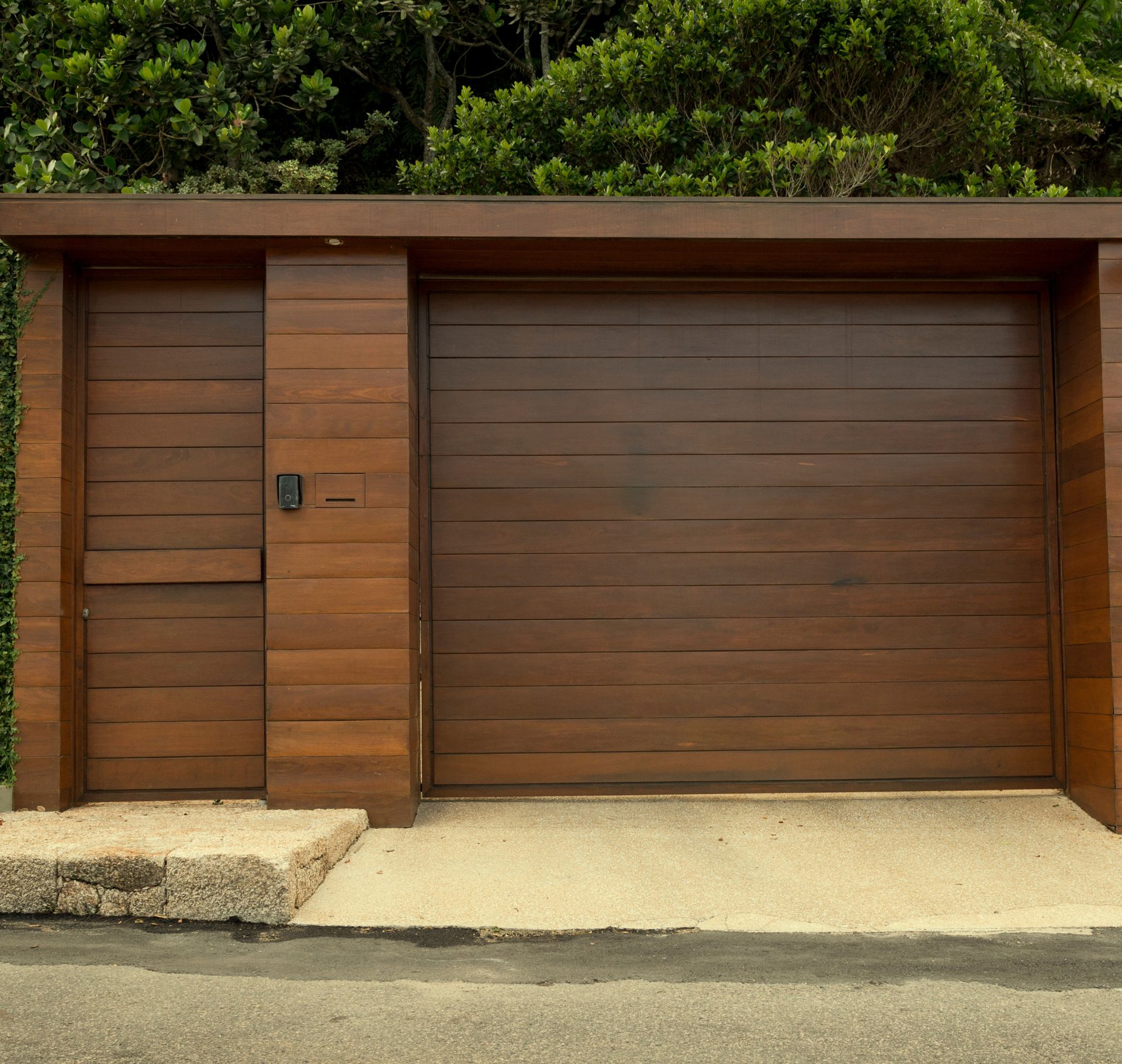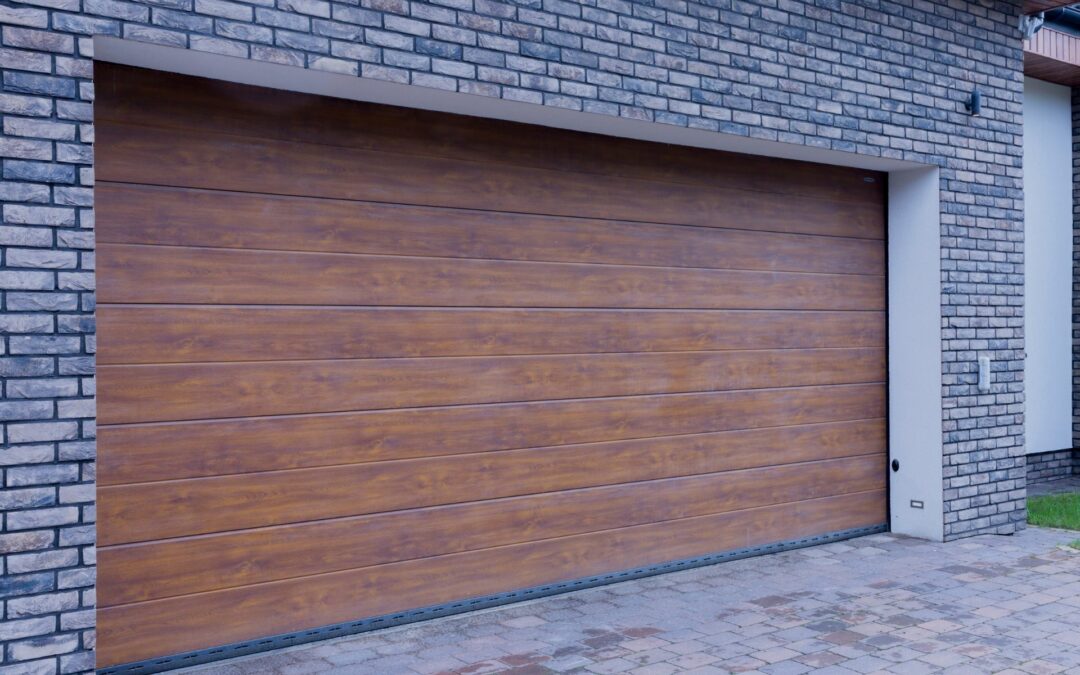Wooden garage doors are a popular choice due to their durability and classic aesthetic appeal. However, just like any other component of your home, they are prone to wear and tear over time. It is important to be aware of the signs of potential problems with your wooden garage door so that you can address them promptly and prevent further damage.
One of the most common signs of wear and tear is difficulty opening and closing the garage door smoothly. If you notice that your door is sticking or jamming frequently, it may be an indication of issues with the tracks or rollers. Inspect these components for any debris or obstructions that may be hindering the smooth movement of the door. Additionally, check for any visible signs of damage, such as cracks, warping, or rotting wood. These can weaken the structural integrity of the door and compromise its functionality. By identifying such problems early on, you can avoid costly repairs or potential accidents in the future.
Dealing with Sticking or Jamming: Simple Solutions to Free Your Wooden Garage Door
Sticky or jammed wooden garage doors can be frustrating and inconvenient. However, there are simple solutions that can help free your door and get it functioning properly again. One common cause of sticking or jamming is a buildup of dirt and debris in the tracks. Over time, dirt and dust can accumulate, causing the door to stick when opening or closing. To solve this issue, start by thoroughly cleaning the tracks with a stiff brush and some mild detergent. Be sure to remove any obstructions and wipe away any excess debris. Once the tracks are clean, apply a lubricant specifically designed for garage doors, such as a silicone-based spray, to ensure smooth and easy operation.
Another possible cause of a sticking or jamming wooden garage door is misalignment. Over time, the door panels may shift slightly, causing them to rub against the frame or tracks. To fix this issue, carefully examine the door for any visible signs of misalignment. If you notice any gaps or unevenness, gently adjust the panels until they are properly aligned. It may be helpful to have a friend or family member assist you with this task to ensure accuracy. Once the door panels are aligned, test the door to see if it opens and closes smoothly. If the problem persists, it may be necessary to consult a professional for further assistance. By addressing these common issues, you can free your wooden garage door from sticking or jamming, restoring its functionality and convenience.
Battling the Elements: Protecting Your Wooden Garage Door from Sun, Rain, and Snow
Wooden garage doors can add a touch of elegance and charm to any home. However, they are also exposed to the elements, which can cause wear and tear over time. Sun, rain, and snow can all take a toll on your wooden garage door, causing it to fade, warp, or even rot if not properly protected.
One of the key ways to battle the elements and protect your wooden garage door is by applying a protective finish. A clear or colored wood stain can help prevent the sun’s UV rays from damaging the wood and causing it to fade. It also creates a barrier that repels water, preventing rain and snow from seeping into the wood and causing it to warp or rot. Regularly reapplying the protective finish will ensure that your wooden garage door remains resilient against the elements for years to come.
Another important aspect of protecting your wooden garage door is ensuring proper drainage. Make sure that the area around your garage is properly graded so that water can flow away from the door and not pool around it. This will help prevent water seepage and minimize the risk of warping and rot. Additionally, ensuring that the garage door has a tight seal when closed will help keep rain and snow from entering the interior, keeping your belongings safe and dry.
Battling the elements is crucial to maintaining the longevity and appearance of your wooden garage door. By applying a protective finish and ensuring proper drainage, you can protect your door from the damaging effects of sun, rain, and snow. Taking these simple steps will not only keep your garage door in top condition but also enhance the overall curb appeal of your home.
Addressing Squeaks and Noises: Quick Fixes for a Quieter Wooden Garage Door
Wooden garage doors can sometimes develop annoying squeaks and noises over time. These sounds can be caused by various factors, such as loose hardware, worn-out rollers, or lack of lubrication. Fortunately, there are some quick fixes you can try to silence your noisy garage door.
First, check the hardware of your wooden garage door. Over time, nuts, bolts, and screws can loosen, leading to vibrations and resulting in squeaks. Use a wrench or screwdriver to tighten any loose hardware and ensure it is securely fastened. Additionally, inspect the rollers. If they are worn or damaged, they can cause the door to squeak. Consider replacing them with new rollers specifically designed for quiet operation.
The Battle against Warping: Tips to Prevent and Fix Bent Wooden Garage Doors
Wooden garage doors are not immune to the effects of time and weather. One common issue that homeowners face is warping, which can cause the door to become misaligned and difficult to open or close. But fear not, as there are tips and tricks to prevent and fix bent wooden garage doors.
Prevention is key when it comes to warping. It’s important to ensure that your wooden garage door is properly sealed and protected from moisture. Applying a high-quality sealant or paint can help create a barrier that prevents water from seeping into the wood. In addition, keeping your garage well-ventilated can help reduce the chances of moisture build-up, which can contribute to warping. Regular maintenance, such as checking for signs of damage and promptly addressing any issues, is also crucial in preventing warping.
The Dreaded Rotten Wood: Easy Steps to Repair and Prevent Decay in Wooden Garage Doors
Rotten wood is one of the most dreaded problems that homeowners can encounter with their wooden garage doors. Not only does it compromise the structural integrity of the door, but it also detracts from the overall aesthetic appeal. However, with a few easy steps, you can repair and prevent decay in your wooden garage doors, saving you time, money, and headaches in the long run.
The first step in dealing with rotten wood is to identify the affected areas. Look for discoloration, soft spots, or areas that are crumbling or falling apart. Once you have pinpointed the problem areas, it is crucial to remove the rotting wood completely. Use a chisel or a sharp knife to carefully scrape away the decayed wood until you reach the solid, healthy wood beneath. Afterward, fill the void with a wood filler or epoxy to restore the door’s structural integrity. This will prevent the decay from spreading further and provide a sturdy base for any subsequent repairs or treatments. By taking these simple steps, you can effectively repair and prevent decay in your wooden garage doors, ensuring their longevity and maintaining their beauty.
Keeping Pests at Bay: Solutions to Protect Your Wooden Garage Door from Insects and Rodents
When it comes to protecting your wooden garage door from unwanted pests, prevention is key. One of the simplest solutions is to seal any cracks or gaps in and around your garage door. Insects and rodents can easily find their way into your garage through these small openings, so using a sealant or weatherstripping to close off these entry points can go a long way toward keeping them out.
Another effective method to ward off pests is to keep your garage clean and tidy. Clutter and food residue can attract insects and rodents, so make sure to regularly sweep and remove any potential food sources. Additionally, storing items in sealed containers and keeping garbage bins tightly closed can prevent pests from being enticed into your garage. Taking these precautions will not only protect your wooden garage door but also help create a less inviting environment for pests to thrive.
While these solutions can help keep pests at bay, it’s important to note that no method is foolproof. In some cases, professional pest control services may be required to eliminate an infestation and ensure long-term prevention. By being proactive and implementing these measures, you can minimize the risk of pests damaging your wooden garage door and maintain a clean and pest-free garage space.

Balancing Act: How to Adjust the Tension of Your Wooden Garage Door Springs
When it comes to keeping your wooden garage door in top shape, one important aspect to consider is the tension of the springs. The springs play a crucial role in providing the necessary counterbalance to make opening and closing your garage door a smooth and effortless process. However, over time, the tension in the springs can become unbalanced, leading to issues such as a door that opens too quickly or closes too forcefully.
Adjusting the tension of your wooden garage door springs is not as intimidating as it may seem. With a few simple steps, you can ensure that your garage door operates at its optimal level. First, identify the type of springs your door has—either torsion springs or extension springs. Then, using the appropriate tools, you can carefully adjust the tension of the springs by either winding or stretching them.
It’s important to note that adjusting the tension of garage door springs can be dangerous if not done correctly, so if you’re unsure or uncomfortable with the process, it’s always best to consult a professional like the ones at M.G.A. Garage Door Repair. Our professional technicians at M.G.A. Garage Door Repair have the knowledge and experience to handle the tension adjustment with precision. Don’t risk safety or compromise your garage door’s performance—trust our experts for a thorough and secure adjustment process.

